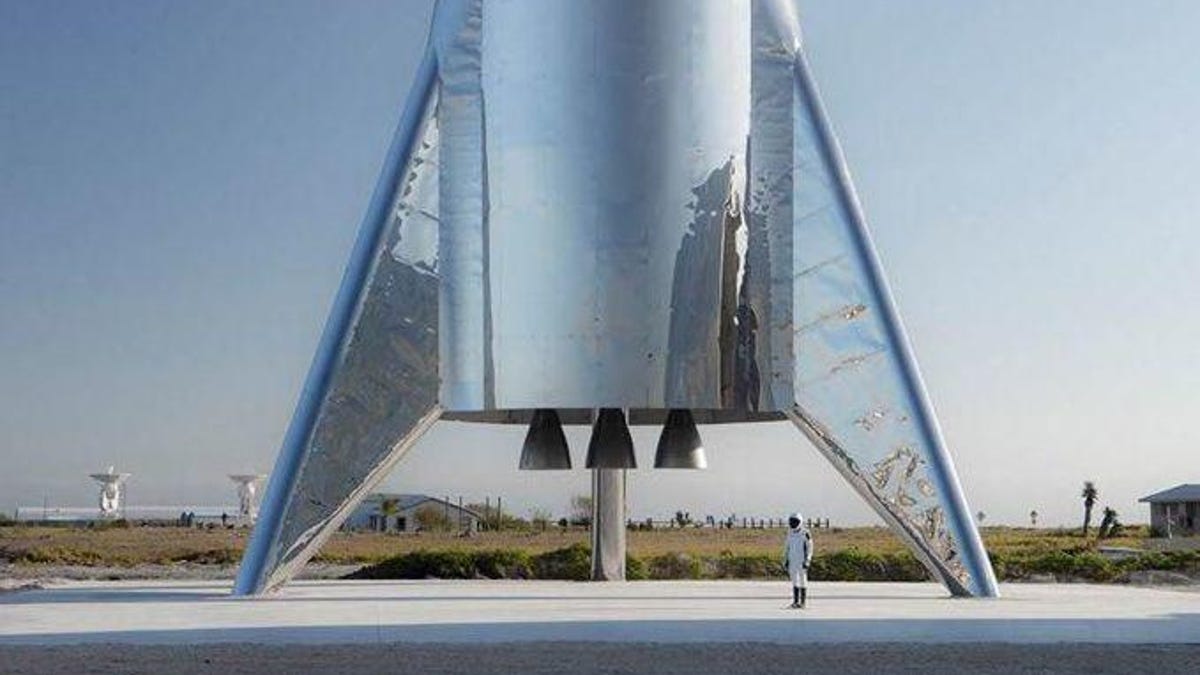SpaceX Starship's new fins bode well for Elon Musk and his Mars rocket
Starship Mk1, a cross between a Dragon, Falcon and a skydiver, is coming together quickly in Texas.

An illustration of the business end of the SpaceX Starship hopper prototype.
SpaceX worked through the weekend at its test facility in Boca Chica, Texas, where the latest prototype of the Starship that Elon Musk hopes to send to Mars one day is coming together.
Photos shared by SpaceX's neighbors in the tiny Gulf Coast community and by Musk himself showed fins being installed on the bottom of the rocket, referred to as Starship Mk1, which could be capable of making it to orbit. That's a significant improvement over the first-generation "Starhopper" prototype, which was retired in recent weeks after making just two short "hops" topping out at 490 feet (149 meters).
There was a lot of progress being made at Boca Chica today. I had a hard time keeping up with it. 😅🚀🤠@NASASpaceflighthttps://t.co/DR5BilOmgzhttps://t.co/Jkmuiw4bRthttps://t.co/PC8uReS8bWhttps://t.co/cPnLuDbItE pic.twitter.com/qtazWbsZA0
— Mary (@BocaChicaGal) September 22, 2019
Adding the rear moving fins to Starship Mk1 in Boca Chica, Texas pic.twitter.com/HWLihqihph
— Elon Musk (@elonmusk) September 22, 2019
SpaceX looks to be racing to finish assembling the latest Starship tester ahead of a presentation Musk plans to give on Saturday, at which he's expected to give an update on Starship's design and its upcoming missions. At previous presentations, Musk has said he hopes to use the giant spacecraft to help build a city on Mars, send tourists around the moon and even for super-speedy transcontinental flights.
Photos of the construction show the newly attached fins on the bottom section of the craft, with a tapered end and nose cone nearby and waiting to top it all off.
Musk tweeted early Monday morning from the Texas facility that three Raptor engines have already been installed and the top half of the prototype will probably be added to the stack on Wednesday.
Bottom half of Starship at night. Top half with forward fins & header tanks probably stacks on Wednesday. Three Raptors already installed. pic.twitter.com/haq3m1V1Wm
— Elon Musk (@elonmusk) September 23, 2019
In response to questions on Twitter, Musk later described the ship as "a strange combination of Dragon, F9 & a skydiver," making reference to SpaceX's Dragon spacecraft and its Falcon 9 rocket.
After Musk's update, we could see Starship Mk1 actually fly as soon as Oct. 13. Its first test flight is set to aim for an altitude of 12.5 miles (20 kilometers), and could be followed shortly thereafter by an attempt to make it to orbit.
Starship's development has been particularly rapid because each test is really just a necessary baby step on the long road to Mars, which Musk has said he'd like to reach as soon as 2022.
Originally published Sept. 23, 6:25 a.m. PT.

